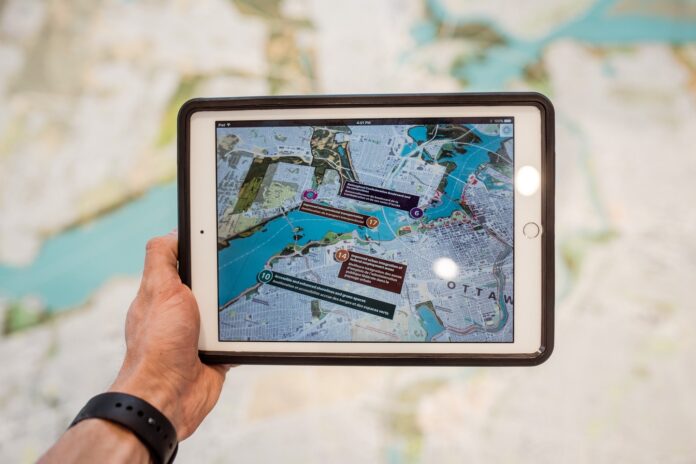
Remote work is no longer confined to large corporations; it has permeated the fabric of small businesses as well. Finding dependable ways to measure performance in a home-based setting can be important for the sustainability of smaller enterprises. A focus on accountability can help fortify the operational foundation of these businesses.
Utilizing Project Management Tools
Managing a remote team in a small business requires smart use of technology. One of the effective ways to track employee activities is through project management tools. These platforms offer features such as task assignments, status updates, and real-time communication. Team members can log what they are working on, and managers can assign deadlines. Such tools offer a centralized space for tracking the progress of tasks and responsibilities.
Establishing Check-In Times
Regular check-ins are instrumental for tracking employees. These could be daily or weekly, depending on the nature of the work. Managers can use video conferencing tools for virtual face-to-face meetings to discuss what each team member is working on. Synchronous communication like this helps maintain a sense of team cohesion and allows immediate feedback.
Monitoring Software for Productivity
Another method to keep tabs on remote work is monitoring software. These specialized applications can track hours worked, activity levels, and even take screenshots at random intervals. This form of tracking is especially useful for tasks that are not easily quantifiable. If you choose this route, make sure you inform employees beforehand to maintain trust.
Using a Virtual Time Clock
For businesses with hourly employees, a virtual time clock serves as an effective tool for tracking work hours. This tool lets employees clock in and out, just as they would with a physical time clock at an office. Unlike traditional time clocks, the virtual ones are designed for remote work and can be accessed from any location. This tool provides an easy way for managers to ensure accurate timekeeping and helps in payroll calculations.
Implementing Activity Reports
Many team collaboration tools have built-in features that allow team members to submit end-of-day or end-of-week reports. These reports typically include what they worked on, the status of those tasks, and what they plan to focus on next. Managers can use these reports to understand individual performance and allocate resources appropriately.
Maintaining Open Channels of Communication
Constant communication is key for a successful remote team. Instant messaging apps and discussion boards can serve as platforms for quick questions and updates throughout the day. A quick chat can often resolve issues more rapidly than a series of emails. By promoting an environment of open communication, you remove barriers that might hinder effective tracking and management.
Flexibility and Trust
While tracking is essential, flexibility is also important. Remote work often brings about a change in work-life dynamics, and not all employees might adhere to a strict 9-5 routine. Instead of just focusing on hours clocked, look at productivity and the quality of work. Trust your team to manage their time effectively and make adjustments as needed.
Leveraging Time Management Techniques
Encourage your team to use time management techniques like the Pomodoro Technique or the Eisenhower Box. These methods help break down work into smaller tasks, making it easier to track and manage. Teams that are familiar with these techniques often find it easier to manage their time, making tracking less intensive for managers.
Use of Timesheets for Manual Tracking
For businesses that prefer simpler methods, the use of timesheets could serve as an efficient alternative. Team members manually fill out their hours worked, tasks completed, and other relevant activities. This method can be particularly beneficial for roles that require frequent shifting between different types of tasks. Managers then review these timesheets at set intervals. The process may seem old-fashioned, but when executed well, it can provide significant insights into how time is being spent.
Data Analysis for Informed Decisions
One underutilized approach for tracking employees is data analysis. By using data from various tracking tools, managers can identify patterns, such as the peak productivity hours of a team or individual, most frequent bottlenecks, and much more. This information can inform future assignments and even organizational changes. For example, if data show that the team is most productive during the morning, you could schedule important tasks to be tackled first thing each day. This method is more reactive than proactive, but it allows for fine-tuning of strategies based on actual performance.
Breakdown of Larger Projects
Large projects can often be overwhelming and difficult to track. To mitigate this, consider breaking them down into smaller, manageable tasks. Each smaller task can have its deadline and responsible party. This not only makes tracking easier but also allows team members to have a clear understanding of what is expected of them. This level of organization can help in preventing the last-minute rush and ensures a better distribution of workload among team members.
Incorporating Employee Self-Assessment
Another unconventional yet effective tracking method is to incorporate self-assessments. At regular intervals, ask employees to evaluate their performance, including an account of tasks completed, hours worked, and challenges faced. Pair this with manager evaluations to create a comprehensive understanding of an employee’s performance. Self-assessment encourages employees to take ownership of their tasks and be mindful of their productivity levels. This can act as a motivational tool and offer an additional layer of accountability.
Regular Updates and Feedback
Last but not least, providing frequent feedback can go a long way. Compliment good work and offer constructive criticism when necessary. Use one-on-one meetings to discuss any concerns or obstacles employees might be facing. Prompt feedback can lead to immediate improvements, thereby aiding both tracking and overall performance.
Conclusion
Remote work presents both challenges and opportunities for small businesses. By implementing soundtracking methods, small business owners can maintain a high level of accountability and productivity, even when a home setting replaces the traditional office.










